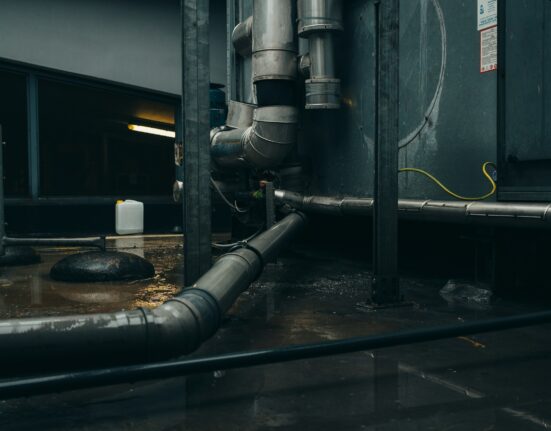In an era where climate change and environmental degradation pose significant threats to our planet, the role of technology in fostering environmental conservation has never been more critical. Bridging the gap between human activity and nature’s well-being, technological innovations provide powerful tools to address ecological challenges. This blog post explores the significance of technology in environmental conservation, highlighting key areas such as sustainability, green tech, and innovation.
1. The Intersection of Technology and Environmental Conservation
Technology and environmental conservation are no longer separate domains but intersecting fields that collectively address our planet’s pressing issues. From smart farming techniques to renewable energy sources, technological advancements are essential for creating sustainable solutions that mitigate environmental impact.
The Role of Technology:
- Data Collection and Analysis: Advanced technologies like remote sensing, Geographic Information Systems (GIS), and drones enable precise monitoring of ecosystems and biodiversity.
- Automation and Efficiency: Automation technologies optimize resource usage, reducing waste and enhancing productivity in various industries.
- Communication and Awareness: Digital platforms and social media spread awareness about environmental issues, mobilizing global communities toward conservation efforts.
2. Pioneering Sustainability Through Innovation
Sustainability is at the heart of environmental conservation. Technological innovations play a crucial role in developing sustainable practices that balance ecological preservation with human needs.
Sustainable Practices:
- Renewable Energy: Solar, wind, and hydroelectric power generation technologies reduce dependence on fossil fuels, curbing greenhouse gas emissions.
- Smart Agriculture: Precision farming and IoT-based solutions optimize water usage, soil health, and crop yields, promoting sustainable agriculture.
- Waste Management: Technologies like waste-to-energy conversion and recycling systems minimize landfill use and manage waste more effectively.
Spotlight on Innovations:
- Vertical Farming: Leveraging hydroponic and aeroponic systems, vertical farms produce high-yield crops in urban settings, reducing transportation emissions and conserving land.
- Energy-Efficient Buildings: Smart building technologies, incorporating energy-efficient systems and materials, significantly reduce energy consumption and carbon footprints.
3. Green Tech: Transforming Industries
Green technology, or green tech, encompasses innovations designed to mitigate environmental impact and promote sustainability. It transforms traditional industries by integrating eco-friendly practices and solutions.
Key Areas of Green Tech:
- Transportation: Electric vehicles (EVs) and public transportation systems powered by renewable energy reduce air pollution and dependency on fossil fuels.
- Manufacturing: Cleaner production technologies and sustainable supply chain management minimize industrial waste and emissions.
- Construction: Sustainable construction practices, including the use of eco-friendly materials and green buildings standards (e.g., LEED certification), enhance environmental performance.
Impact on Industries:
- Automotive Industry: The shift to EVs accelerates the transition to cleaner transportation, supported by innovations in battery technology and charging infrastructure.
- Textile Industry: Eco-friendly fabrics and sustainable manufacturing processes reduce water consumption, chemical use, and waste in textile production.
- Food Industry: Plant-based alternatives and lab-grown meats offer sustainable protein sources, decreasing the environmental footprint of food production.
4. Innovation: Driving Environmental Solutions
Innovation is a driving force behind the development of cutting-edge solutions that address environmental challenges. It fosters creativity and collaboration across sectors, leading to breakthroughs that promote conservation and sustainability.
Prominent Innovations:
- Artificial Intelligence (AI): AI-powered analytics enhance environmental monitoring and decision-making, predicting climate patterns and optimizing resource management.
- Blockchain Technology: Blockchain ensures transparency and traceability in supply chains, promoting ethical and sustainable practices.
- Biotechnology: Advances in biotechnology, such as bioremediation and genetic engineering, aid in pollution control and habitat restoration.
Collaborative Efforts:
- Public-Private Partnerships: Collaboration between governments, private enterprises, and NGOs drives innovation and the implementation of green tech solutions.
- Research and Development: Investment in R&D accelerates the discovery of novel technologies and methods for environmental protection.
5. The Future of Technology in Environmental Conservation
As technological advancements continue to evolve, their potential to drive environmental conservation grows exponentially. The integration of emerging technologies will further enhance our ability to combat ecological threats and preserve the planet for future generations.
Future Trends:
- Internet of Things (IoT): Expanding IoT networks will enable real-time environmental monitoring and adaptive management strategies.
- Quantum Computing: Quantum computing promises to revolutionize data analysis, offering unprecedented capabilities for solving complex environmental challenges.
- Space Technology: Satellite technology and space exploration will provide new insights into Earth’s ecosystems and climate systems, informing global conservation efforts.
Call to Action:
As eco-conscious consumers, tech enthusiasts, and environmental activists, our collective efforts are crucial for driving technological adoption and innovation in environmental conservation. By supporting sustainable practices, advocating for green tech, and fostering collaboration, we can harness the power of technology to create a greener, healthier planet.
Conclusion
The significance of technology in environmental conservation lies in its ability to offer innovative and sustainable solutions to pressing ecological challenges. From pioneering renewable energy sources to transforming industries through green tech, technological advancements are integral to achieving a balanced coexistence between humanity and nature. As we move forward, embracing these innovations and fostering collaboration will be key to ensuring a sustainable future for generations to come.








Leave feedback about this